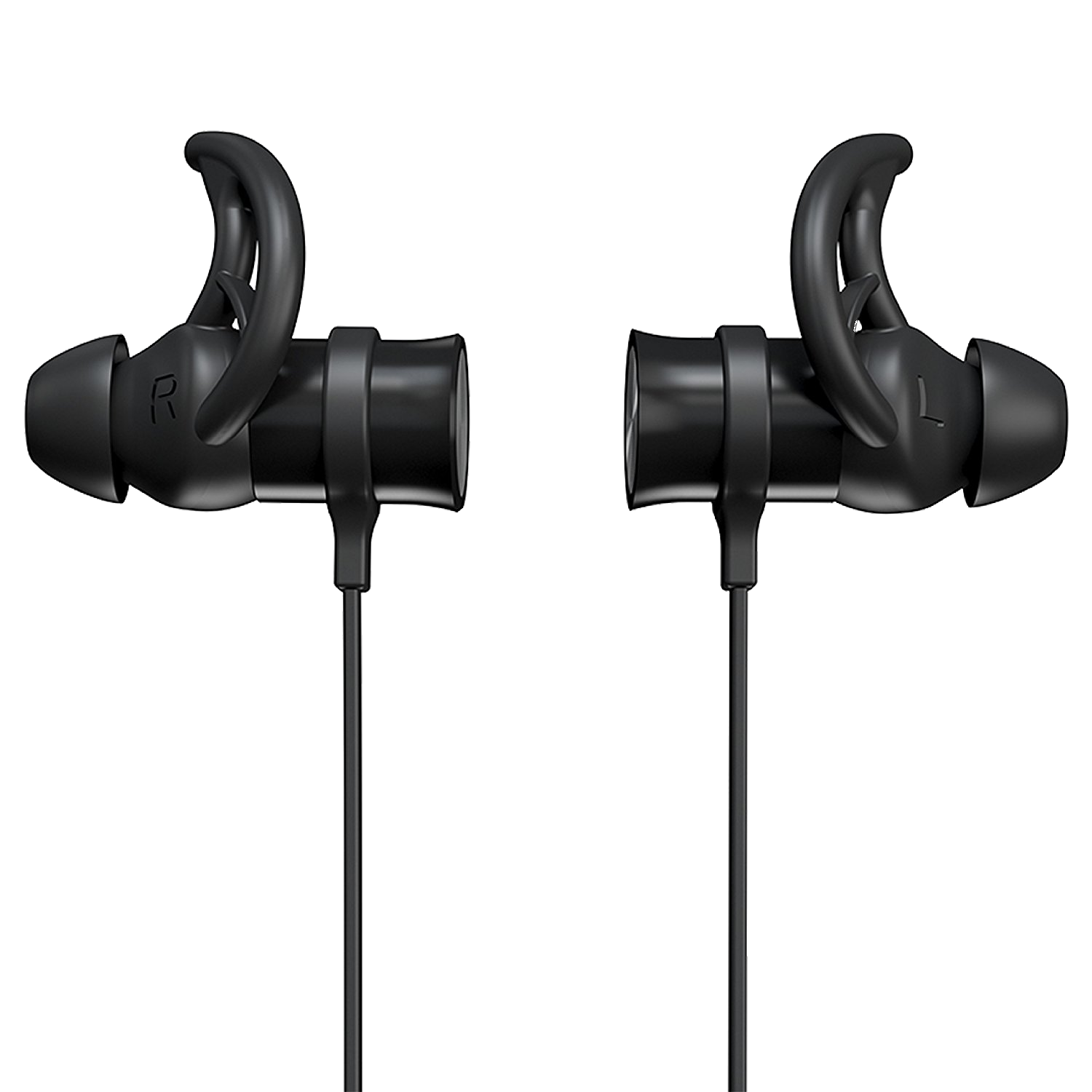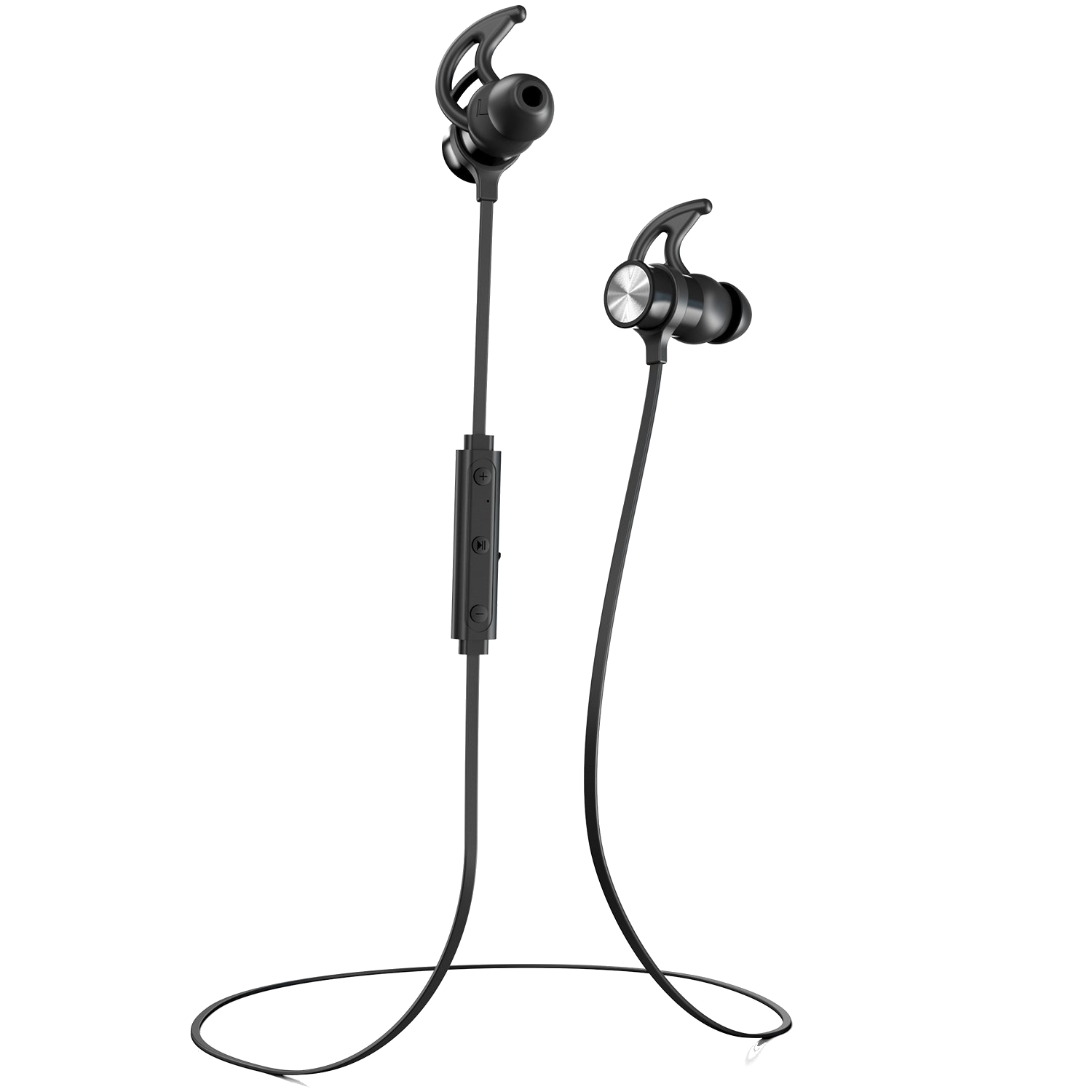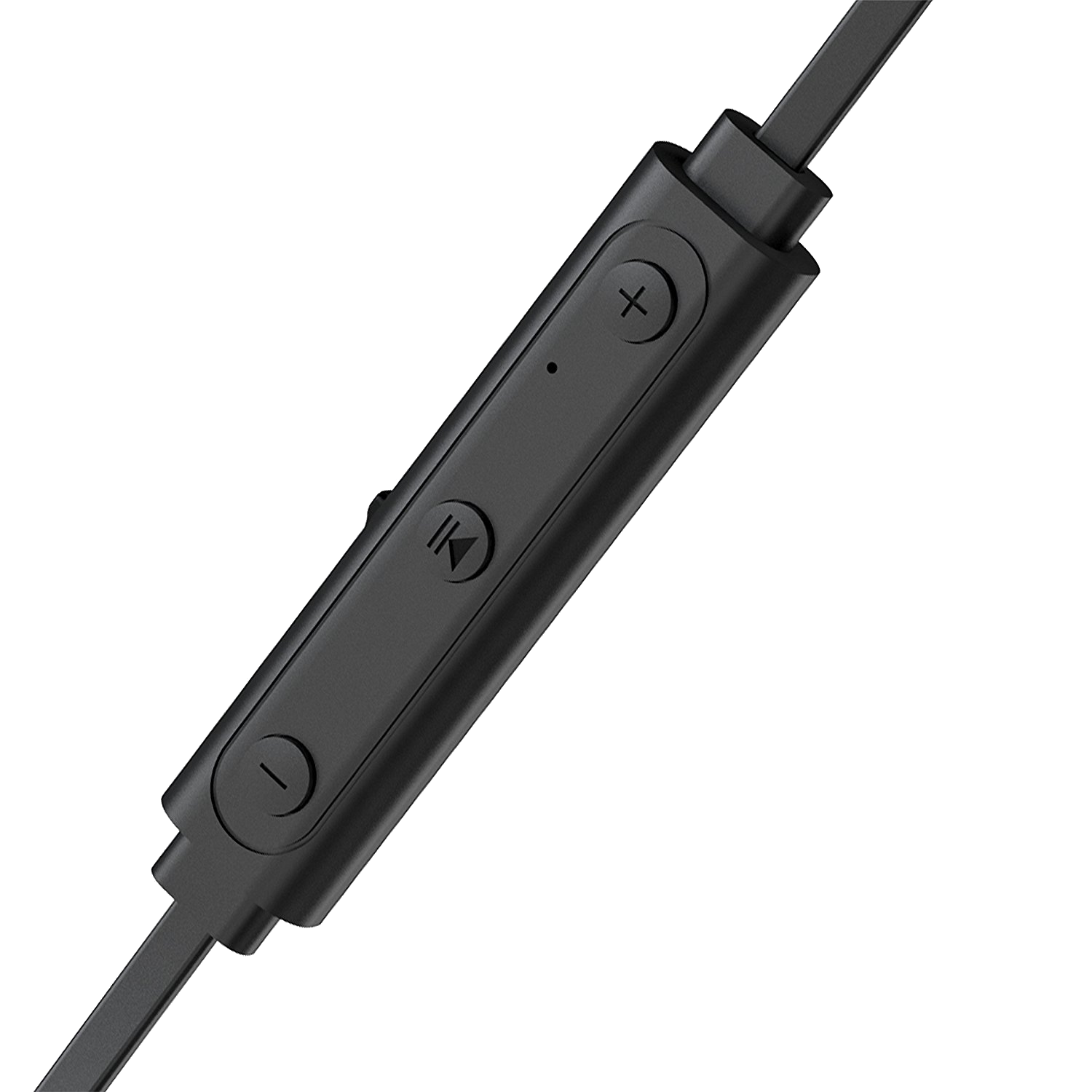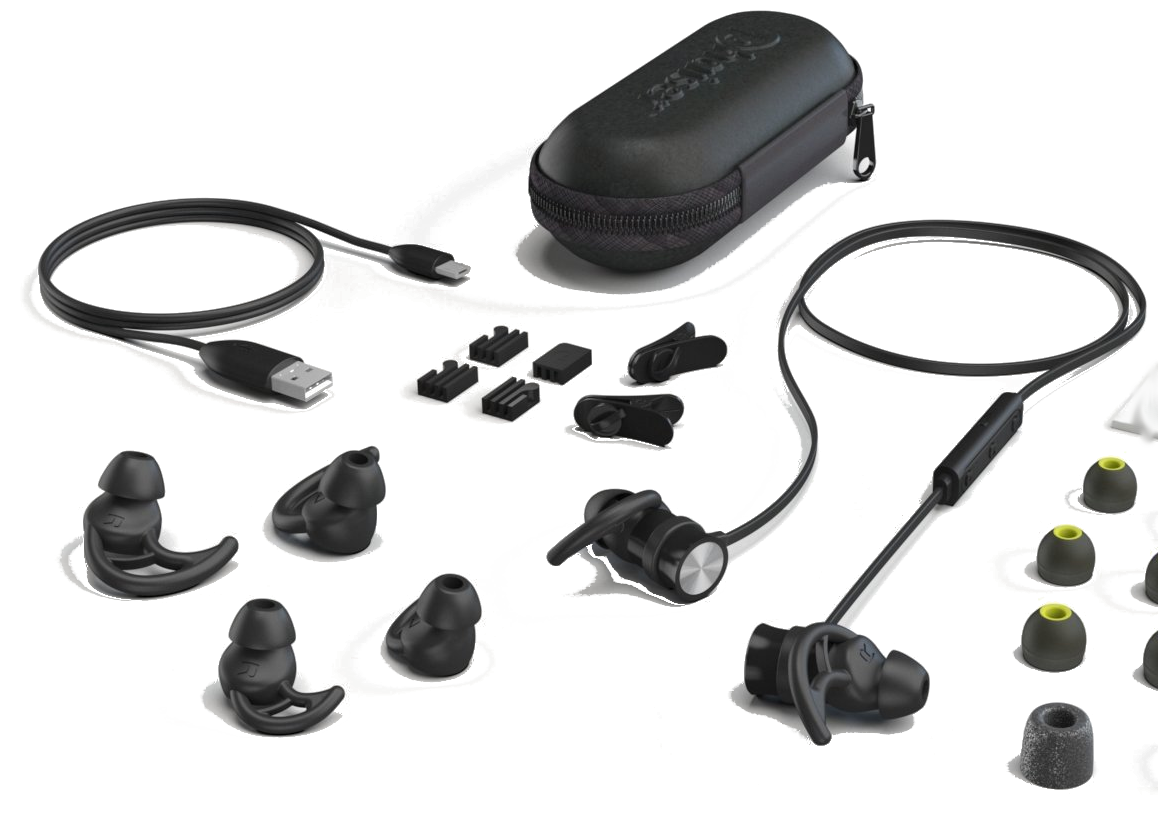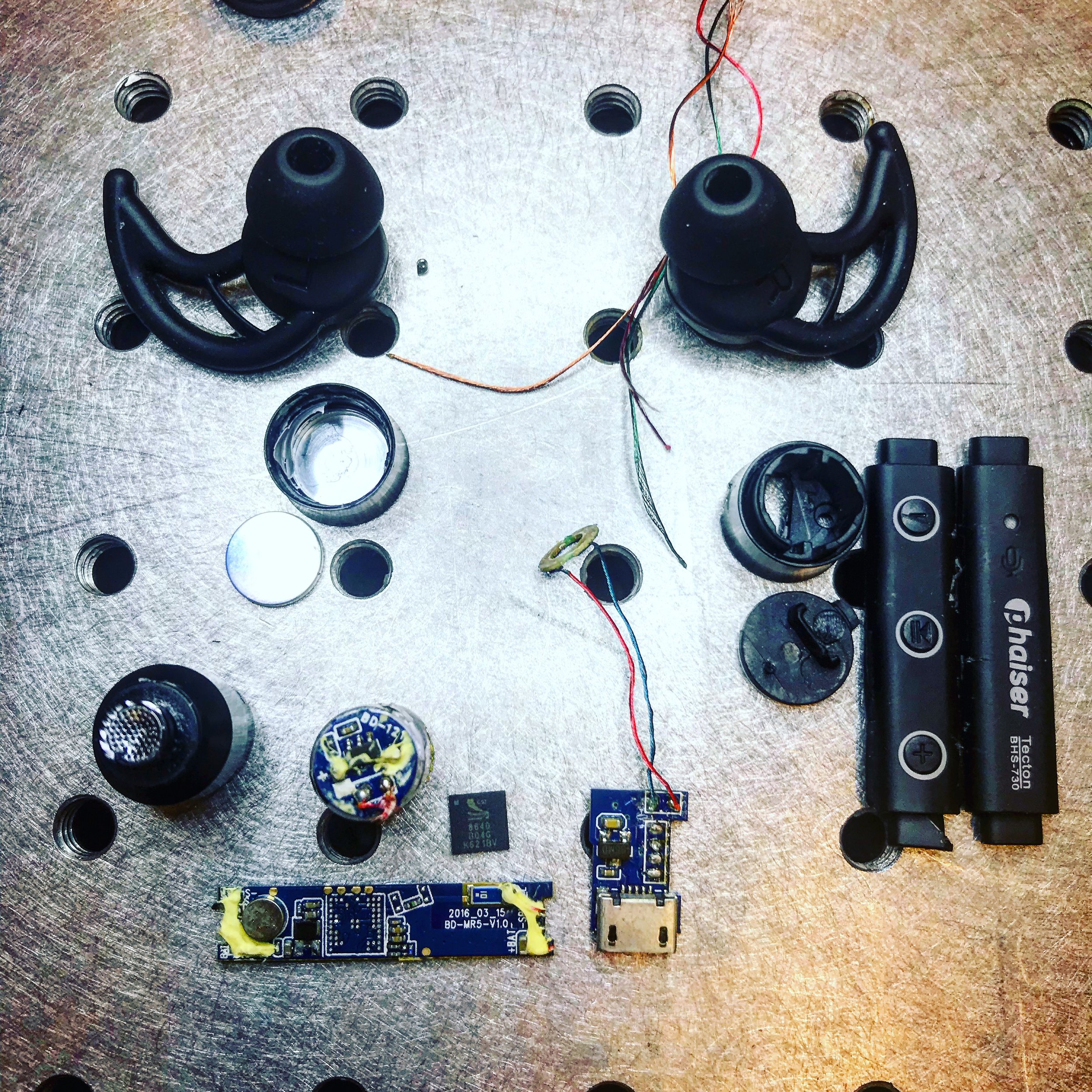Disassembling a Pair of Bluetooth Headphones
My favorite pair of (cheap) Bluetooth headphones recently lost their ability to hold a charge. Incidentally, I decided to take them apart and investigate the components. As one might expect, the headphones consisted of two small audio drivers, a lithium-ion supercapacitor (rechargeable battery), and a Bluetooth system on chip (SoC). Traditional wired headphones consist of a pair of audio drivers and a plug that connects to a preamp device (cell phone, iPod, stereo, etc.). Bluetooth headphones additionally require conditioning circuits for batteries, amplification, and signal processing. These circuits are necessary to reproduce the original audio signal that is sent from the device, which is subsequently decoded on the headphone side and amplified for human auditory enjoyment.
The headphones used here are the Phaiser BHS-730 Bluetooth Headphones. They operate under Bluetooth 4.1; they have two audio drivers; a microphone for talking; and a button module with headset, hands-free, and audio/visual remote control profiles. The device battery capacity is 110 mAh and the device uses a classic micro USB plug to charge. Below are several marketed photos of the headset.
Disassembly
The first thing I noticed when disassembling the device was the deliberate manner in which every component was placed. It was not easy to dislodge every component, and as a result several elements were damaged or destroyed. Below is an image with the basic components displayed. You can see the connecting wires, the soft gel tips, the speaker casings, the plastic button module, the microphone grill, the battery, the signal processing circuit, and the micro USB charging port.
Full layout of parts disassebled from the Phaiser Bluetooth Headphones.
One earbud with the speaker grill exposed.
Below I fully disassemble one earbud and labeled its parts along with the Bluetooth module, the micro USB charging module, and the supercapacitor (battery).
Speaker Components
The most basic components of a speaker are the voice coil, magnet, and cone. The voice coil oscillates back and forth due to Faraday's law of induction because of the magnet and an applied alternating current. This oscillation, when connected to the cone, produces pressure waves by moving air at the frequency of the applied signal. This is the basic functionality of a speaker and is the functioning mechanism behind the Bluetooth speakers in each earbud above.
The peculiarity of the earbud speakers lies in the top cover. The top cover not only blocks part of the speaker cone, but it also has a long thin channel that leads to the grill. This is an interesting design choice. Possible issues could arise in performance because of the geometry of the channel. There may be reflections, dissipation, standing waves, etc. that could produce unwanted audio profiles.
Basic speaker component diagram demonstrating the three necessary parts of a speaker: coil, cone, and magnet. Taken from: https://www.sciencebuddies.org/Files/7472/6/speaker-diagram.png
Closer view of the speaker parts showing the voice coil and cone together next to the magnet. You can also see a better view of the top cover with the guiding channel as well as the gel tip and the casing.

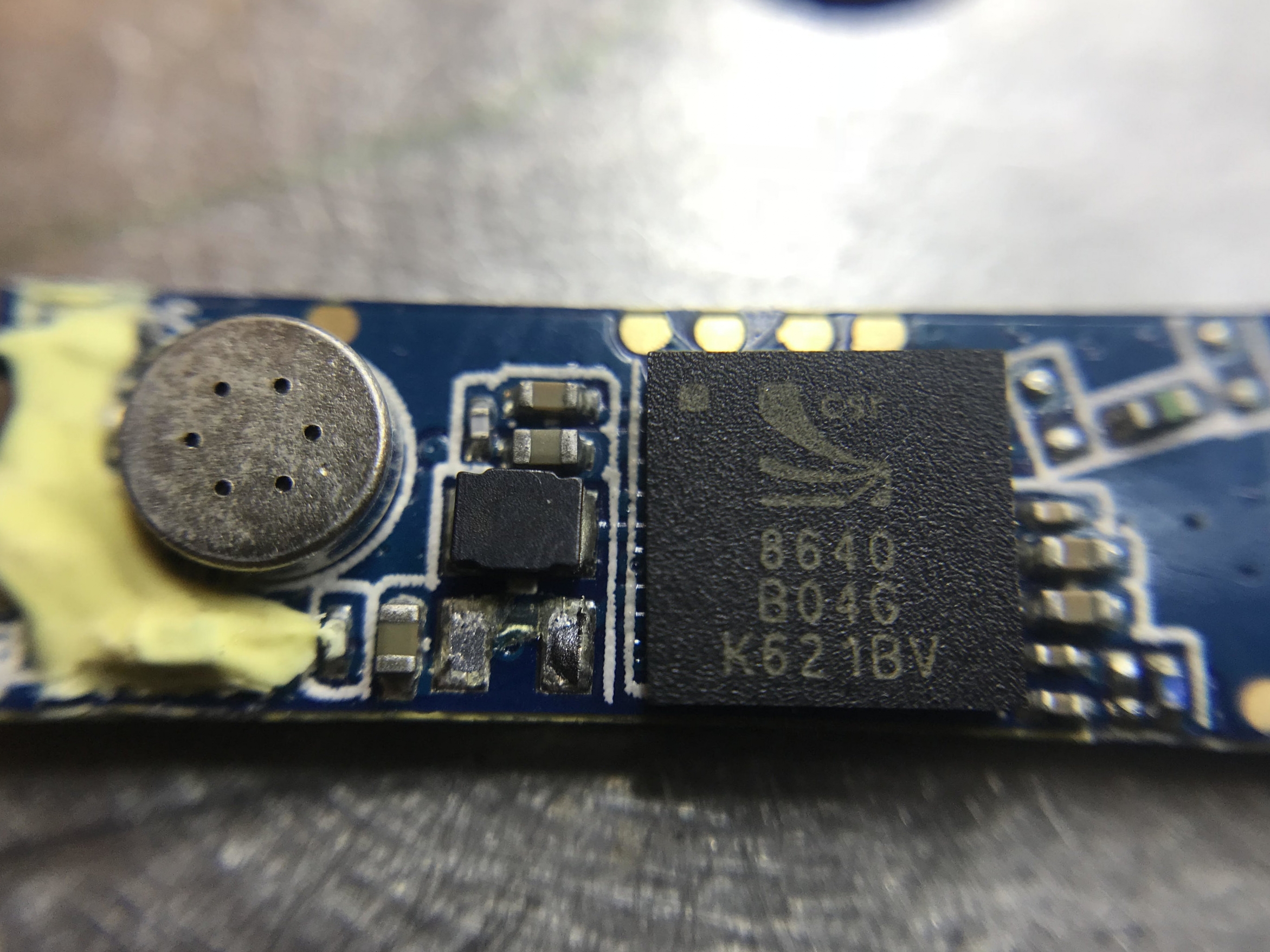
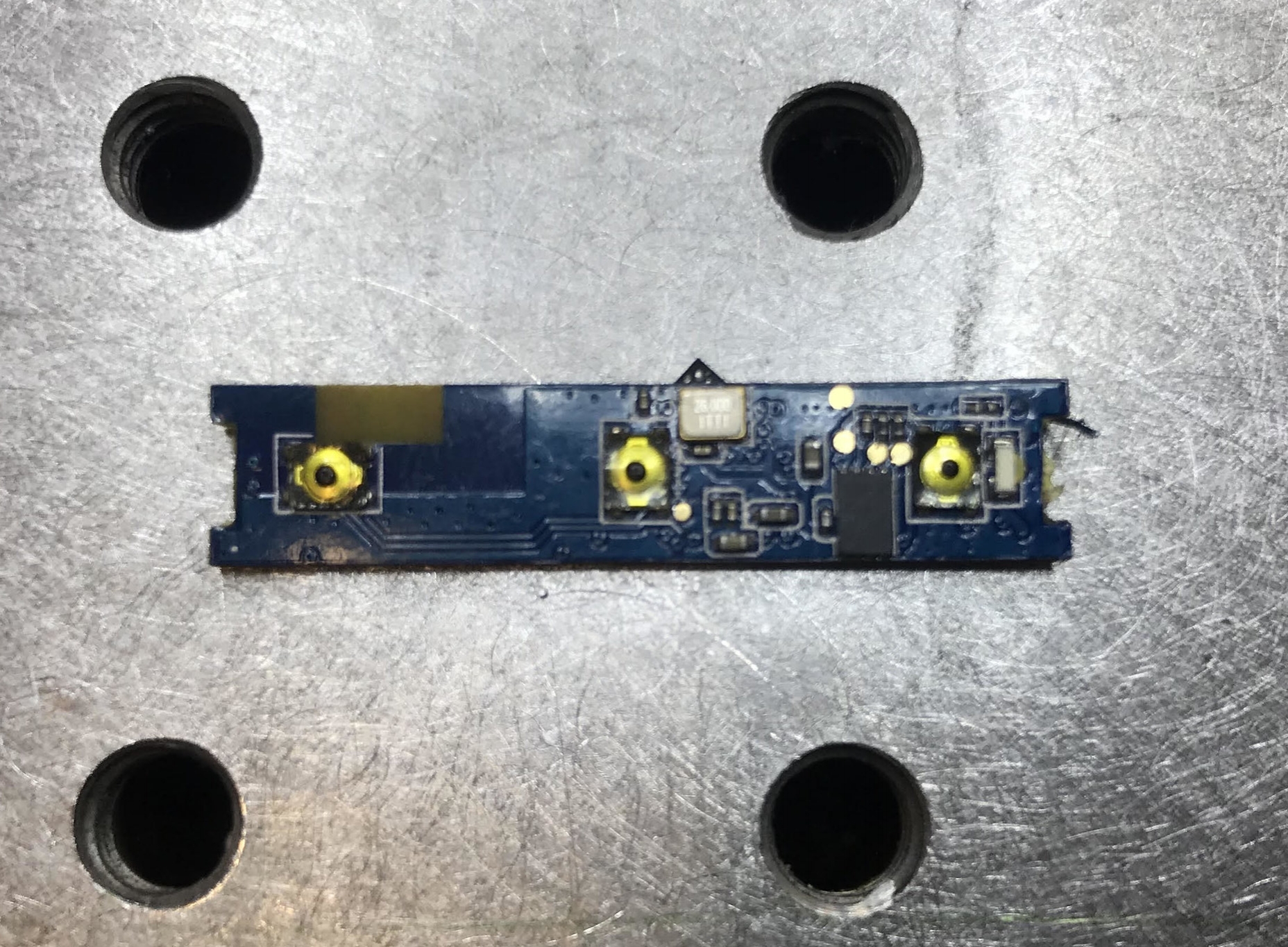
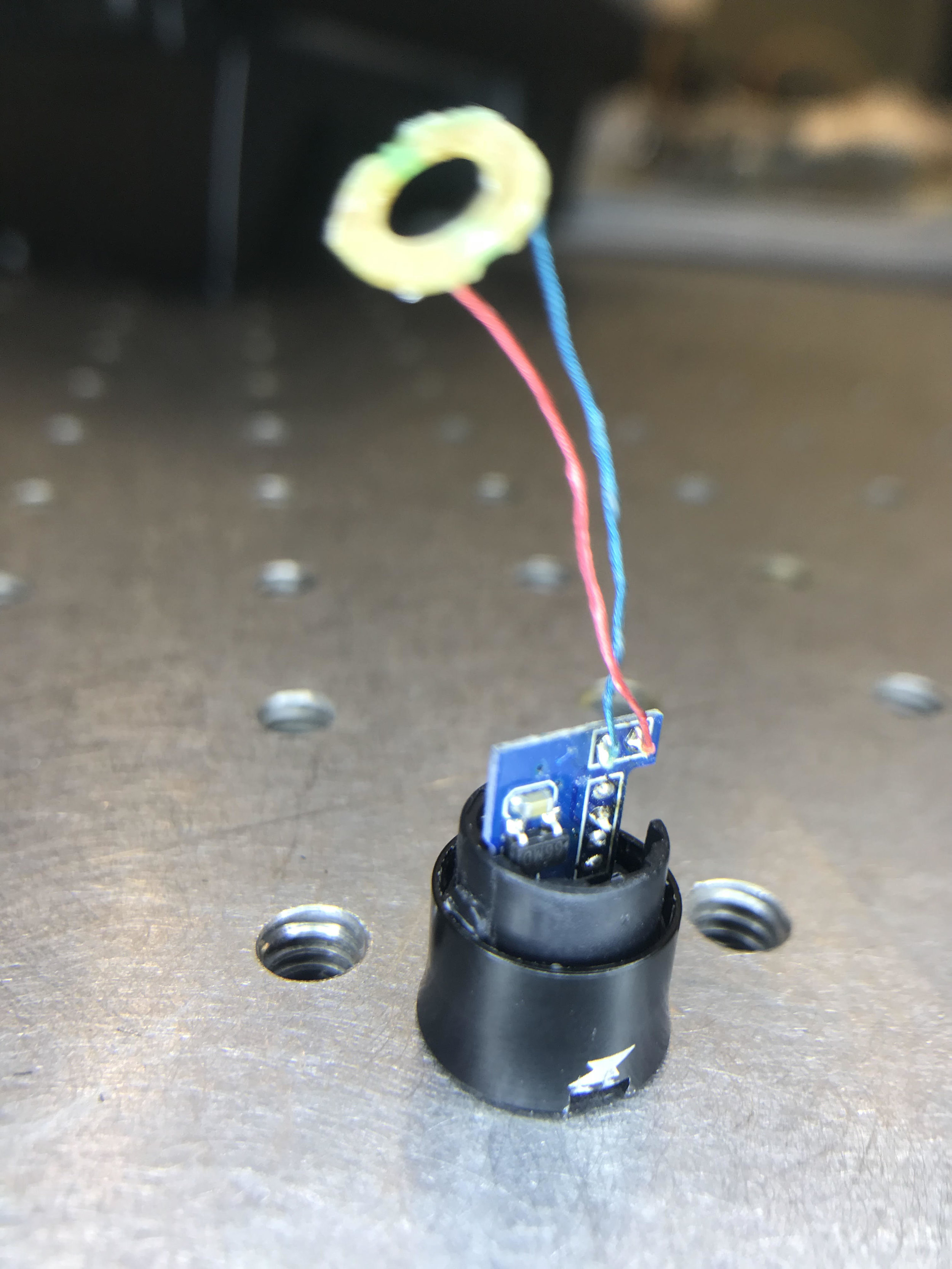
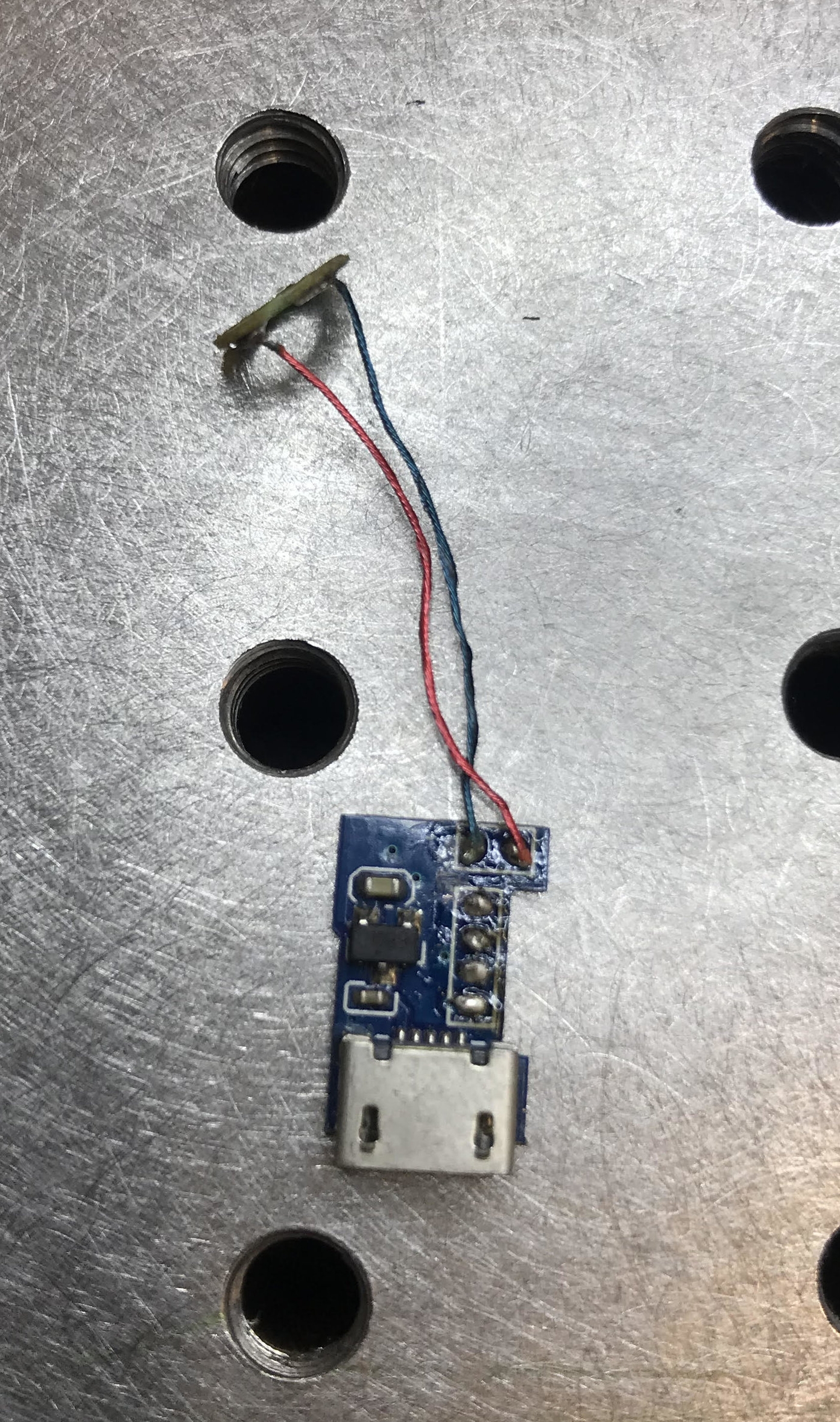

Battery
The most interesting discovery in this disassembly was the use of a supercapacitor. I was not aware that supercapacitors were utilized in cheap devices, let alone Bluetooth headset devices. The capacitor had a signal conditioner atop it, likely for voltage or current regulation. I am not completely familiar with supercapacitors, so I will leave this aspect of the investigation alone, however, I wonder if the label is true or if it's just a regular li-ion battery. The reason is that supercapacitors are supposed to retain their charge for hundreds of thousands of cycles, and this one went from 8 hours to 2 hours in a little over a year. And I only charged them two times a day. This means that after roughly 1200 charges it lost 75% of its ability to hold a charge - I think that sounds more like a li-ion battery. However, there may be something at work that I am not familiar with, i.e. self-discharge, heat damage, circuitry leaks, which could have contributed to this seemingly short life span.
Top view of the circuit atop the capacitor.
Capacitor laying on its side.
Bluetooth module that houses Qualcomm's CSR-8640 chip. See the spec sheet here.
Bluetooth CSR-8640 Module
It would be remiss of me if I did not delve somewhat into the Bluetooth module of the Phaiser headphones. The CSR-8640 is the SoC that handles the audio signal processing, Bluetooth radio, battery charging, and even low memory storage (think: past Bluetooth devices, talkback settings, etc.).
The CSR-8640 is impressive because its an all-in-one solution to wireless audio and control. The chip permits up to two microphones, it can charge a battery at 1.8V and 1.35V at 200mA, it employs Bluetooth 4.0, it can sample up to 48kHz of audio for analog to digital conversion with 16-bits of resolution, it has an audio EQ on-board, and is packaged in a small 5.5mm x 5.5mm x 1mm chip. Quite remarkable, I'd say.
Conclusion
I hope this investigation and disassembly was informative and piqued interest in the composition of market electronics. I always find it interesting and educational to examine a commercial device to see how components are utilized in today's technology. I too learned something through this procedure in the way of using supercapacitors as batteries. I also found several interesting artifacts in this particular set of Bluetooth headphones. I am curious now to measure the performance of the channel after the coil and cone to see the acoustic dependence on the geometry of the channel. I imagine there are some anomalies due to that design choice. Additionally, I was happy to find the CSR-8640 as the central nervous system to the headphones. It was a pleasant surprise to find the all-in-one solution to the signal processing and bluetooth radio. Overall, I loved disassembling this devices because it was difficult and educational. It proved to me again, that the electronics market is predictable but innovative. And after reverse engineering enough devices, you start to see similarities and predictive behaviors, but not without learning something. And that's precisely why I enjoy carrying out these types of projects: because I always learn something.

